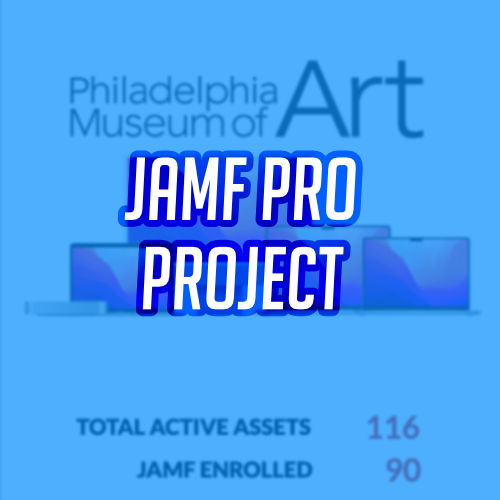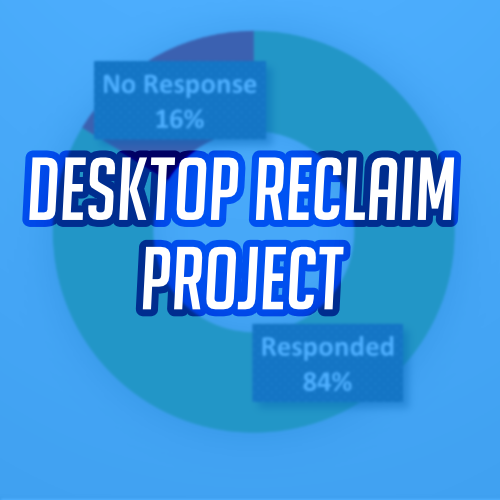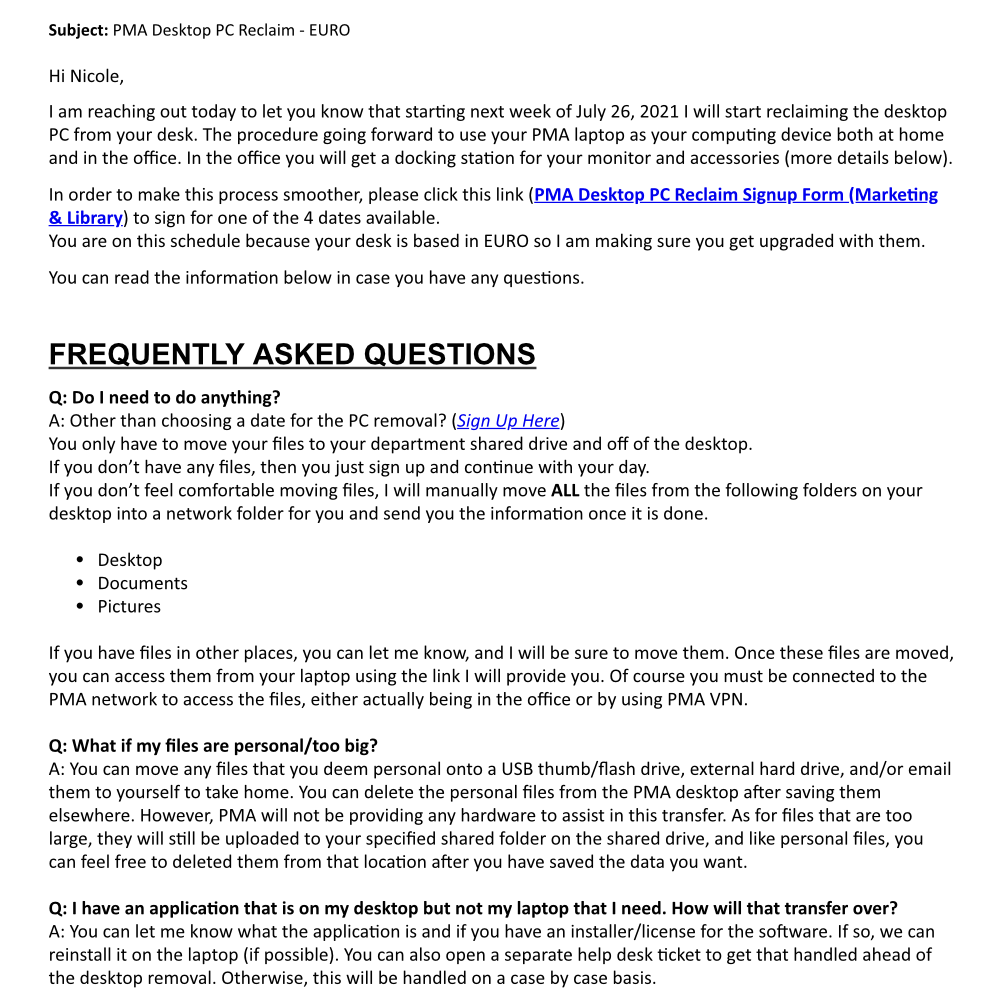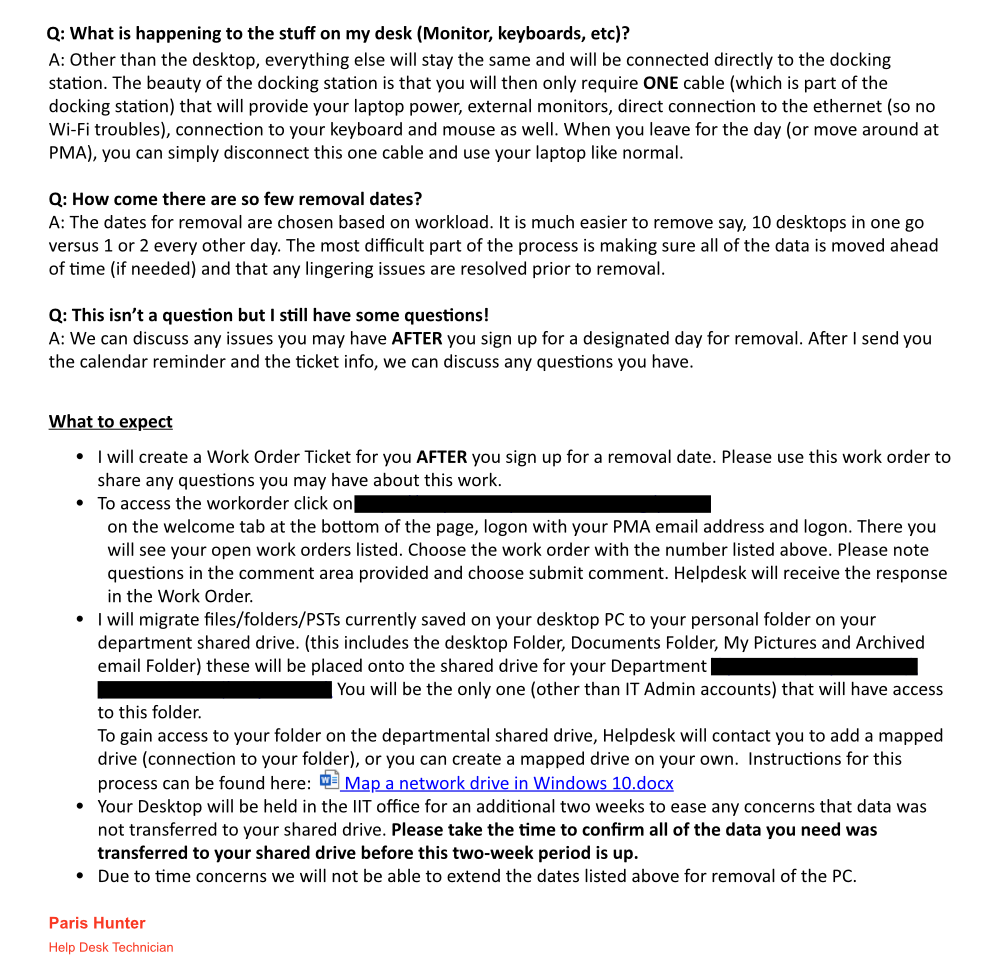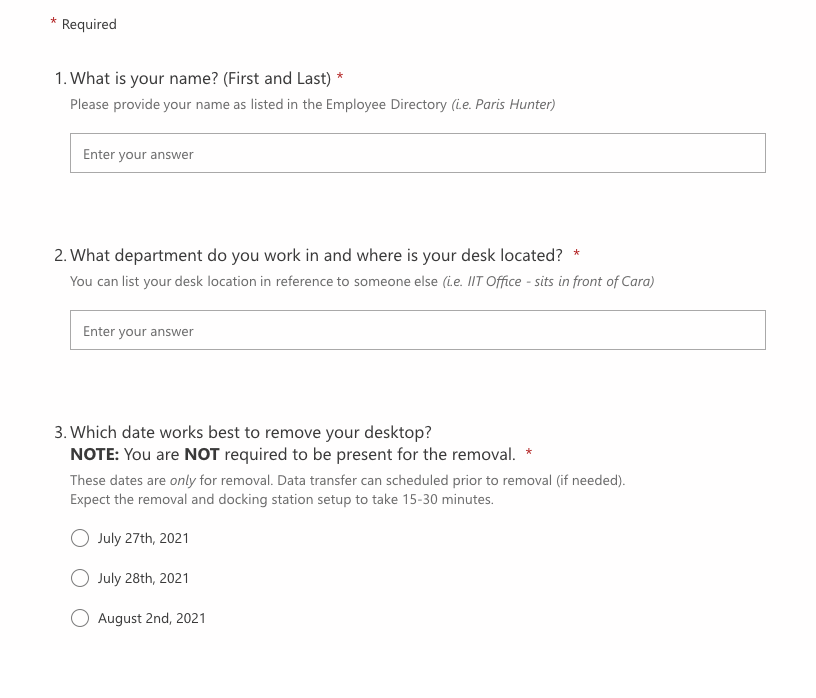As the subject matter expert on JAMF, I was tasked with figuring out how the system worked, what Apple hardware the Museum had, and how to best document that knowledge for future reference.
I started this complex project with a simple concept: “How does this software work in perspective as a new user?”
I automated the setup of iPads, tracked down and remove old devices, and created an easy to maintain Asset Management system while documenting everything to make it easier to teach to someone else.
RESOURCES: Markdown Markup Language, HTML, Skitch, Snagit, Microsoft Power Canvas Apps, Microsoft Excel, technical writing, video editing, Adobe Creative Suite
Brief/Challenge
This multi-faceted process covered 3 aspects (Assessment, Deploy & Document, and Tracking & Management) of the SaaS Jamf as a Mobile Device Management (MDM) of Apple hardware in the Museum.
This covered the assessment of the Apple hardware and software at the Museum, management the deployment of Apple hardware and software, and of course the tracking (documentation) of the hardware at the Museum.
Jamf is a massively integrated MDM for Apple hardware and software in an enterprise environment. As of January 2021, Jamf is managing 20 million Apple devices around the world (source).
Needless to say, it is a big challenge to prepare for the rollout of this software in our own environment. I was tasked with the rollout of JAMF in our environment. To get started, I viewed this project as 3 separate parts (Assessment, Deploy & Document, and Tracking & Management) with the major focus point being well documented and streamlined processes.
Solution
Step One – Assessment
The first step of the process was to determine the exact state of relevant Apple hardware that was accessible at the Philadelphia Museum of the Art. In the flowchart below, I laid out my thought process for determining what hardware we have and the following steps.
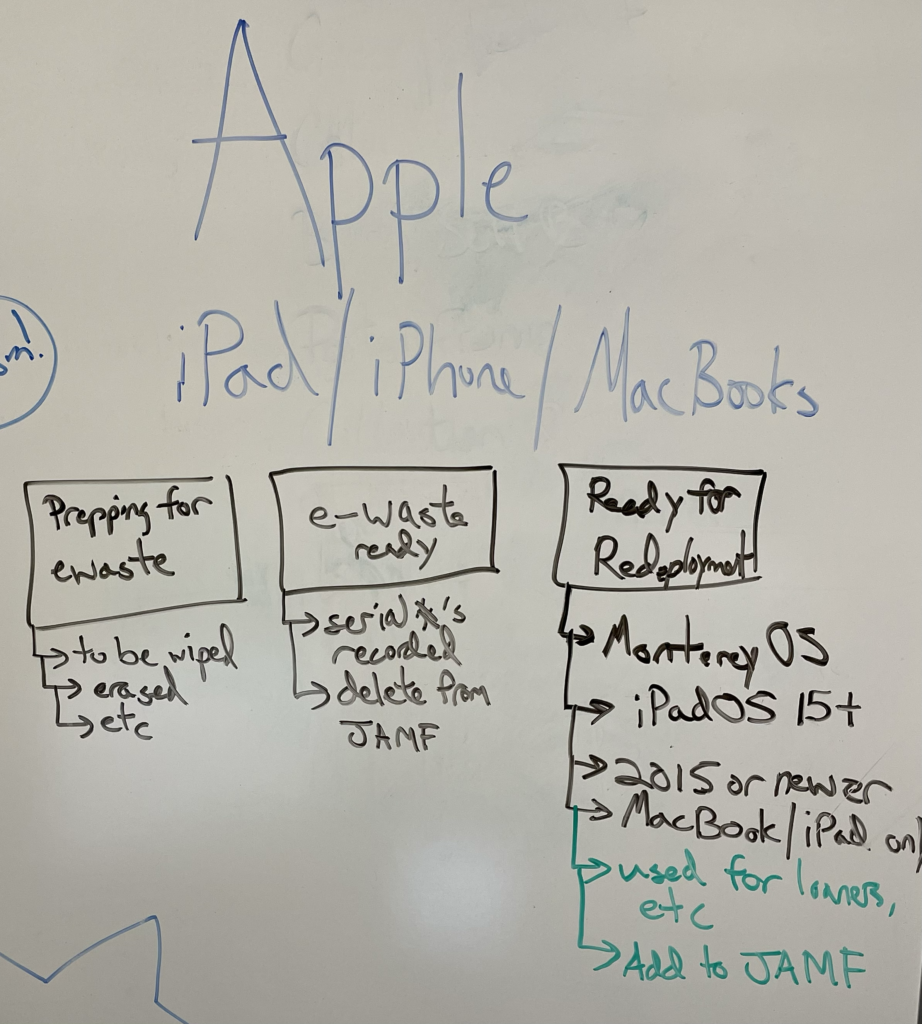
Determining which products were worth keeping and which devices would be e-wasted took a considerable amount of time. Prior to my involvement, no one every took an inventory of all the iPads, iPhones, iMacs, MacBooks and other devices on site at the Museum.
According to my records, we had more than 250+ Apple devices floating around in various stages of usability in addition to the fact that the exact location of most of these devices were unknown.
Step Two – Deploy & Document
The second step of the process was to make sure Jamf worked for our needs and document the process for future reference.
In the images below, there are 2 iPad home screens, one setup normally and one setup through Jamf:
- the iPad home screen on the left is the home screen of a brand new iPad from Apple that was setup normally (i.e. you buy an iPad and go through the normal setup).
- the iPad home screen on the right is the home screen of a brand new iPad from Apple that I enrolled into Jamf prior. The actual setup (including my custom branded wallpaper I designed and the apps and folder placement) was automatically performed by Jamf (i.e. you turn this iPad on and it connects to the server and pull the configuration files).
In addition to the time savings for each iPad and the associated setup, iPads can be easily repurposed for different departments or needs since Jamf handles the rollout of applications as well.
Step Three – Tracking & Management
Using the Microsoft Power Apps platform, I used Canvas apps to create an asset management system for Active Assets and e-waste Assets with data being supplied from a Microsoft Excel spreadsheet that I painstakingly assembled.


The Excel spreadsheets (and by extension, the canvas apps) track a few important details of each hardware record.
The Apple eWaste Assets tracks the following information:
- Discontinued Year: The year Apple stopped manufacturing the device
- JAMF Status: The device should be listed as REMOVED from Jamf for ewaste
- Model Name: The moniker provided by Apple (i.e. MacBook, iPhone)
- Model Number: The model number provided by Apple and begins with an A (i.e. A1286, A1486)
- Release Year: The year Apple released the device
- Serial Number: The device’s serial number printer on the back/bottom of the device.
- Year E-Wasted: The year that the device was ewasted at the Museum.
The Apple Active Assets tracks a bit more information:
- Serial Number: The device’s serial number printer on the back/bottom of the device.
- Model Name: The moniker provided by Apple (i.e. MacBook, iPhone)
- Assigned User: The user that the device is tied to (i.e. Paris Hunter)
- Assigned Department: The department that device is tied to (i.e. IT)
- Location: The location of the device/user (i.e. Building A > IT Dept > Apple Office)
- AppleCare+ Until End Date: The date AppleCare ends. Expired is listed otherwise
- Current OS: The OS version (and release year) installed at the time (i.e Big Sur (2020))
- Maximum Supported OS: The maximum OS version (and release year)(i.e. Monterey (2021) and beyond)
- Screen Size: The size of the screen if relevant. A Mac Pro has N/A for a screen size
- Model Number: The model number provided by Apple and begins with an A (i.e. A1286, A1486)
- Release Year: The year Apple released the device
- JAMF Status: Is the device enrolled or not enrolled in Jamf? (i.e. Enrolled)
- Additional Notes: Notes relevant to this hardware (i.e. Ticket #12345 for cracked screen)
Also the counts on the home screens for both apps update in real-time either from records added in the applications OR manually added to the underlying Excel spreadsheet.
This solution allows for easy management in the future (since a variety of devices can access the Asset apps) and easy to manage since Excel is easily understood at a base level for most users. The app allows the data in the Excel spreadsheet to be searchable even using partial matches. Also, this information allows management to make an easy decision as to what hardware should be updated.
Outcome
Assessment of Inventory and Hardware
Our records originally reported 250+ Apple devices when I started this project. After the project, I was able to reduce the active devices down to 116, with JAMF licensing costs required for only 90 of those devices.
Regarding the JAMF licensing costs, I have saved at least $2600 per year in additional licenses costs that were no longer needed regarding active devices.
In addition, I was able to ewaste 103 devices that were no longer being used at the Museum, saving on potential license costs, employee time and mangement of the outdated hardware.
In addition to all of the above, almost every Apple device in the Museum is now accounted for and easily tracked to a user and/or department making hardware management easier in the Windows dominated environment.
Deployment & Documentation of JAMF
I created a 55+ page technical guide with images written in Markdown showing exactly how to use Jamf in the scope of the Philadelphia Museum of Art. I went through extensive detail showing the exact settings and common solutions to Jamf issues (such as updating annual certificates to keep the system working).
This document was shared with all of the IT department so that future management can be
Tracking & Management of Hardware
The main focus of the App method was to get ahead of the digital clutter where critical data lives in a bunch of files spread across various locations in multiple stages of completion (i.e. Apple_Assets_2021_2022_v3_Work_In_Progress.xls). I am sure we all had to deal with some level of this in our life and careers.
The added purpose of creating the apps were to have a central place to manage and update information regarding Apple hardware at the Museum. As it currently stands, the apps are easily accessible through Microsoft Teams through any device (mobile or otherwise) as long as the user has proper credentials.
Another benefit of the apps (as a whole) is to provide future technicians an easy way of recording and updating devices on the go using in-house resources (i.e. an old iMac was tossed due to a cracked screen or Paris gets a new 14″ MacBook Pro which should be reflected in the Active Asset records).
I have laid the foundation for work that can easily be expanded for the future of the Philadelphia Museum of Art.
